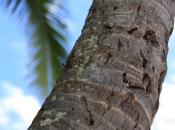
Web navigation tips
Here are five handy tips to keep your visitors from getting lost as they navigate your website.
Step 1: Leave a trail of breadcrumbs. Let visitors know where they are within your website by adding a row of text links at the top of each page forming a directory-style path. Example:
Home > Event Schedule > May
Step 2: Give them a site map. Create a page that lists links to each page of your site in a simple organization chart format. This gives visitors quick page access and a visual representation of the site (helpful in search engine indexing as well).
Step 3: Annotate your links. Let visitors know what to expect by including a brief description of where and what they're about to encounter. This is true for internal links (leading to other pages within your site) as well as external links (leading to another website altogether).
Step 4: Non-verbal cues. Let visitors know they've left your site by having external links open in a new browser window. Just add the following attribute to an anchor tag: target="_blank" Example (anchor tag intentionally left open so you can see the code):
<a href="http://www.cowtownmug.org" target="_blank">url...
Step 5: Be consistent. Make sure each page of your website includes these elements:
- logo or site identifier (on interior pages link logo to the home page)
- global navigation elements (main pages, search boxes, site map, etc.)
- text equivalents to global navigation options at the bottom of the page
- global utilities (log in, ecommerce, etc.)
- contact information (email, phone, and/or address)








